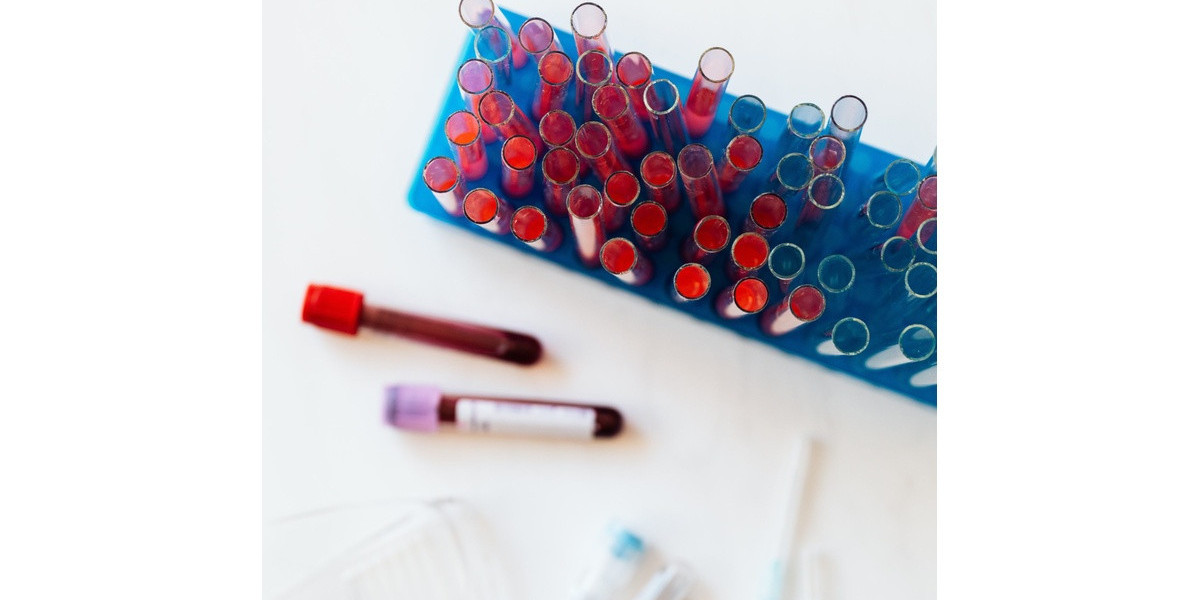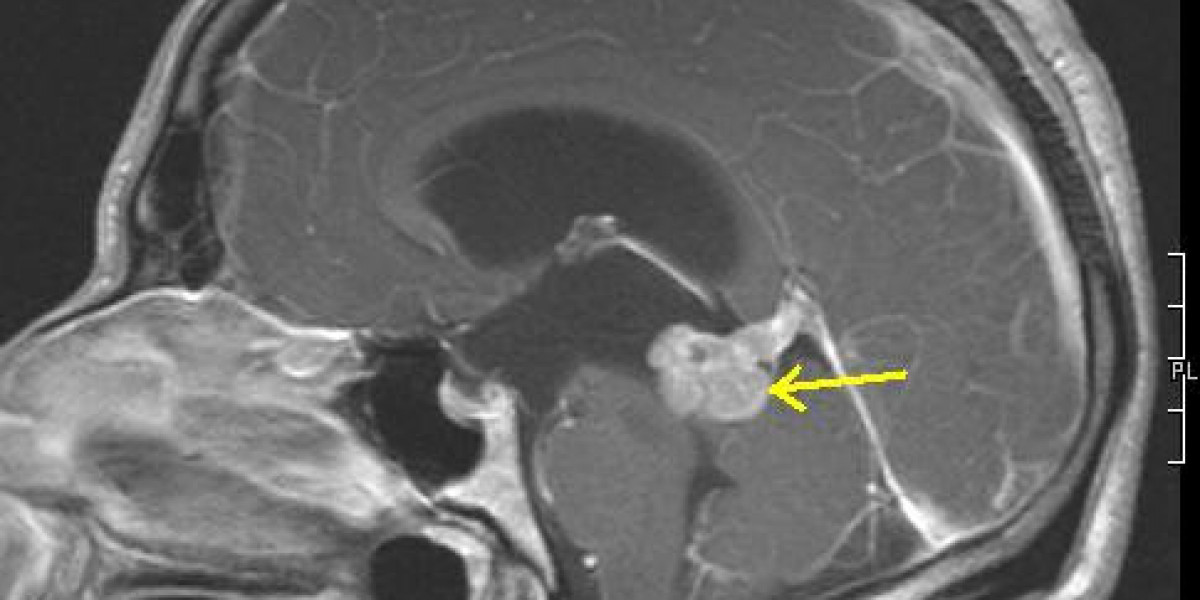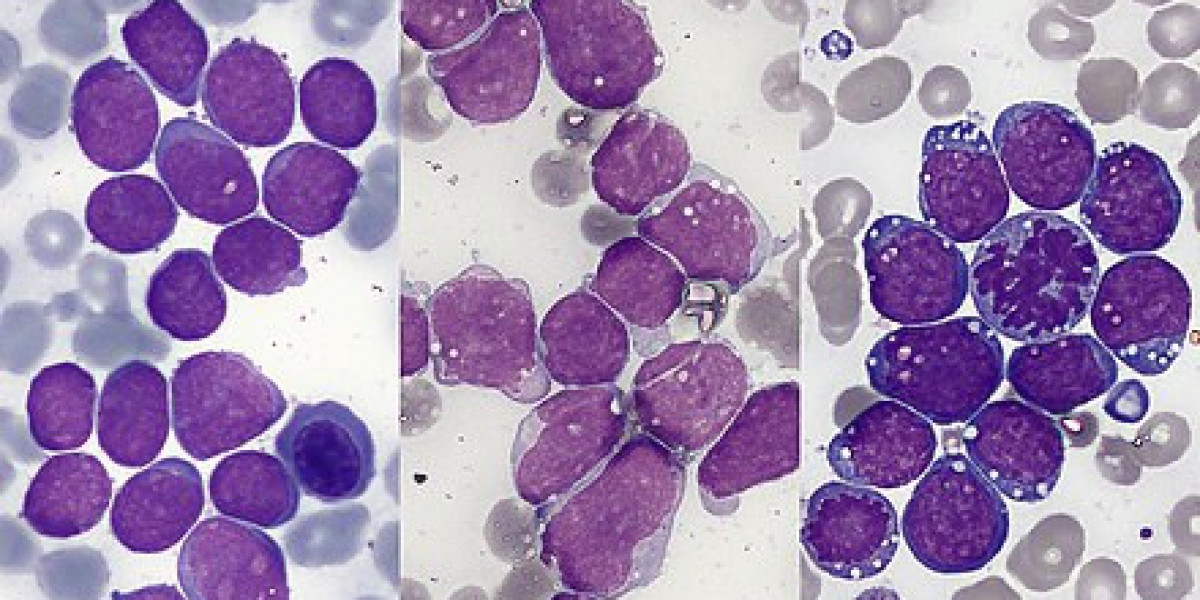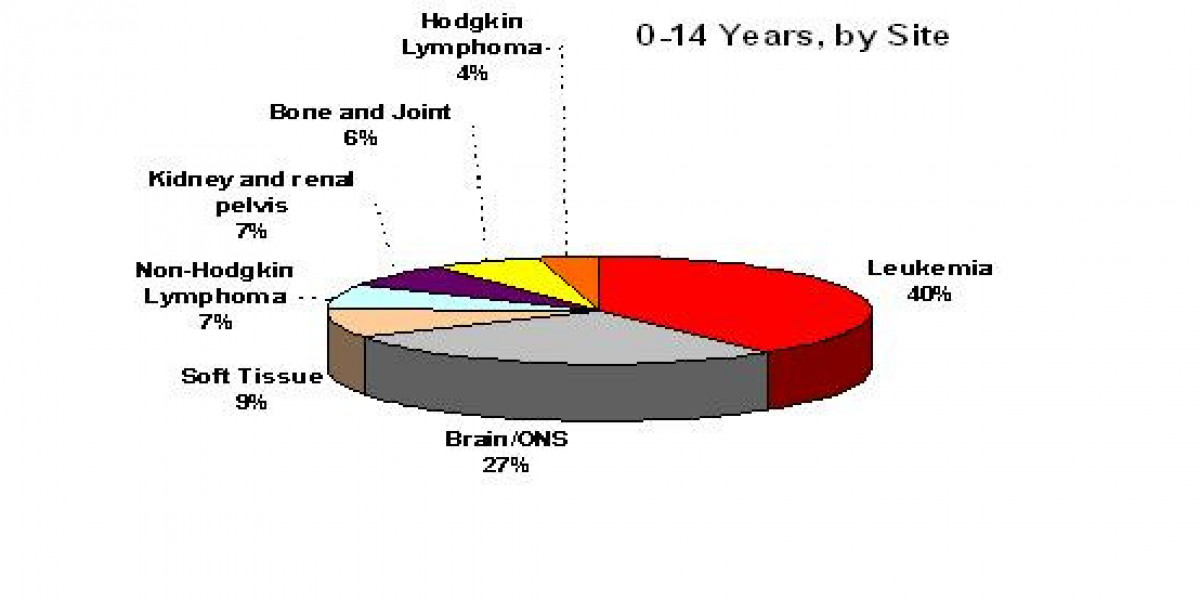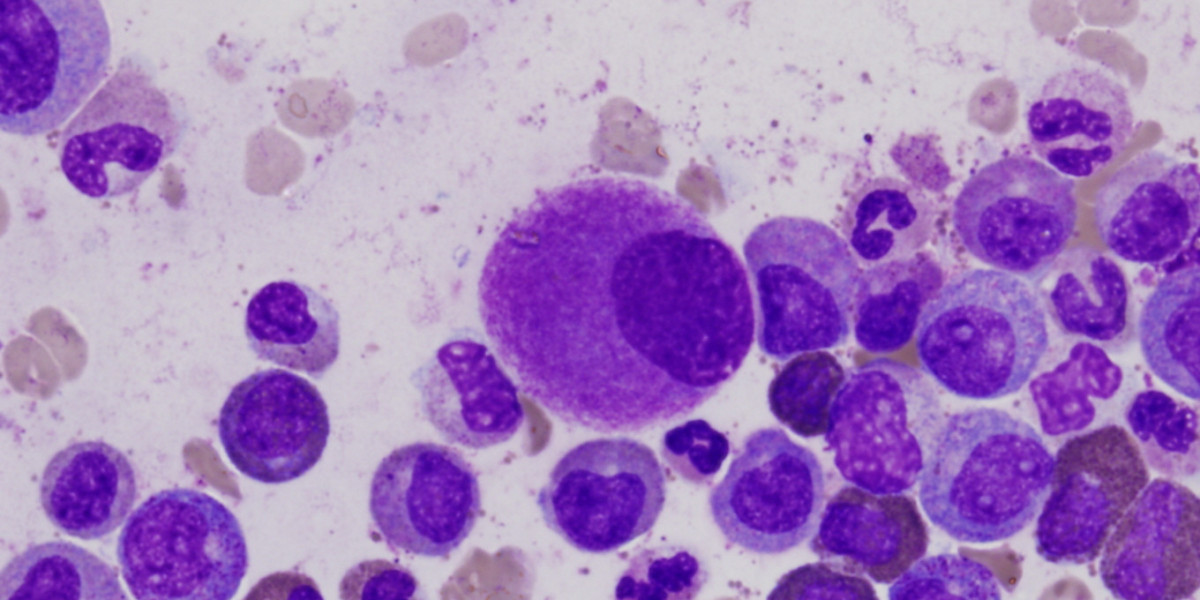Posted by: Skin And Cancer Institute in Medical Dermatology

After radiation treatment, we recommend implementing thorough skin protection strategies since treated areas remain permanently vulnerable to damage. Apply broad-spectrum SPF 30+ sunscreen every two hours, avoid peak sun hours (10 AM-4 PM), and wear UPF-rated clothing for consistent coverage. Cleanse with lukewarm water and mild soap, moisturize with approved fragrance-free products, and monitor for infection signs like fever or new sores. Our detailed protocols below outline advanced care techniques for ideal recovery.
Key Takeaways
- Apply broad-spectrum SPF 30+ sunscreen every two hours and avoid sun exposure during peak hours (10 AM – 4 PM).
- Use approved moisturizers daily with fragrance-free formulas like Aquaphor® to maintain skin hydration and barrier function.
- Schedule biannual dermatology screenings for early detection of secondary malignancies and ongoing skin health monitoring.
- Wear tightly woven, UPF-rated clothing and wide-brimmed hats to provide consistent protective coverage for treated areas.
- Monitor treated skin daily for infection signs, color changes, or new lesions and report concerns immediately.
Immediate Skin Care Following Radiation Treatment
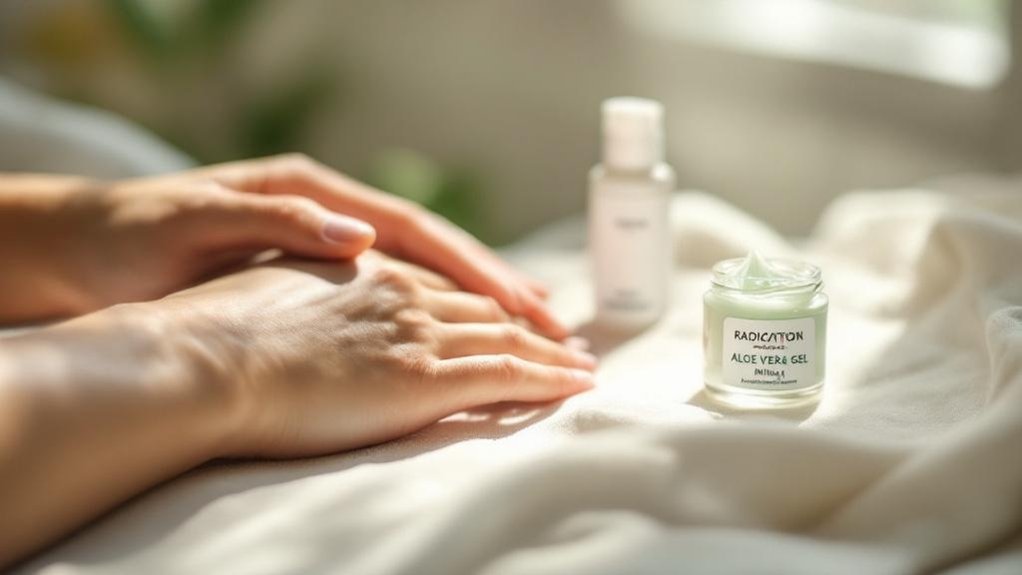
While radiation therapy effectively targets cancer cells, it inevitably affects surrounding healthy skin tissue, requiring immediate and specialized post-treatment care. We acknowledge your skin needs gentle attention during this critical radiation healing period. Cleanse treated areas with lukewarm water and mild soap, patting—never rubbing—the skin dry to prevent friction damage. Limit showers to once daily to preserve natural moisture barriers.
Proper skin hydration becomes paramount during recovery. We recommend applying approved moisturizers only after your care team’s clearance, avoiding application within one hour post-radiation. Choose non-greasy formulas like Aquaphor® in thin, even layers. Monitor for infection signs including fever, blisters, or new sores, and report these symptoms immediately to your medical team for prompt intervention.
During recovery, wear soft, loose clothing that won’t irritate your healing skin, keeping the treated area uncovered whenever possible to promote proper air circulation and healing.
Essential Sun Protection Strategies for Treated Areas
Beyond immediate post-treatment care, we must establish thorough sun protection protocols to safeguard radiated skin from harmful ultraviolet exposure. Our UV awareness should center on avoiding peak radiation hours between 10 AM and 4 PM, when exposure risks are highest. We’ll implement broad-spectrum SPF 30+ sunscreen application every two hours, focusing specifically on treated areas that rebuild with diminished natural protection. Tightly woven, UPF-rated clothing provides consistent coverage without reapplication requirements. Wide-brimmed hats protect facial regions, while UV-blocking sunglasses shield periocular skin. Our sun safety strategy includes seeking shade, monitoring daily UV Index readings, and avoiding reflective surfaces that amplify exposure. We can’t rely solely on sunscreen—comprehensive protection requires layering multiple preventive measures for ideal outcomes. Remember that dark colors provide superior UV protection compared to light-colored fabrics, making them particularly valuable for covering previously treated skin areas.
Managing Wounds and Skin Reactions Effectively
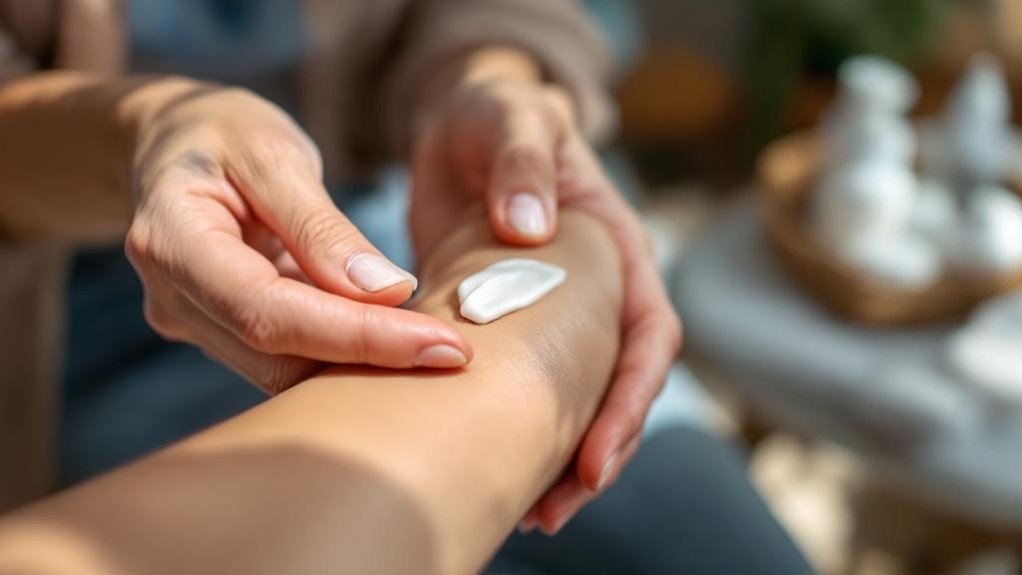
We recognize that effective wound management following radiation therapy requires specialized approaches tailored to compromised tissue healing. Our treatment protocols emphasize hydrogel dressings for ideal moisture balance, rigorous infection prevention measures, and evidence-based topical interventions. These strategies collectively address the unique challenges posed by radiation-induced skin reactions while promoting tissue recovery. Patients should maintain regular moisturizing with fragrance-free products to support optimal skin hydration throughout the healing process.
Hydrogel Dressing Benefits
When radiation therapy damages delicate skin tissue, hydrogel dressings offer a scientifically-proven approach to accelerate healing and minimize complications. We’ve seen these advanced dressings create ideal moist environments that facilitate natural wound closure while enabling autolytic debridement.
The healing mechanisms involve maintaining cellular viability despite radiation-induced toxicity. Aspirin-infused hydrogels scavenge reactive oxygen species and repair DNA damage without compromising cellular growth. These hydrogel applications eliminate harmful adhesive tapes that can further damage fragile skin, providing secure adhesion without chemical bonds.
Our experience shows complete healing in severe radiation dermatitis cases requires approximately 17 dressing changes over 20 days. The semi-occlusive barrier manages moderate exudate while mimicking interstitial fluid’s nutrient profile, supporting thorough dermal repair for our patients. Patients consistently report decreased psychological burden and enhanced comfort throughout the treatment process.
Infection Prevention Strategies
Radiation therapy’s impact on skin barrier function greatly increases infection susceptibility, making thorough prevention strategies paramount for excellent healing outcomes. We must prioritize meticulous infection control through gentle hygiene practices using mild, low-pH cleansers and warm water application. Our approach involves maintaining optimal skin hydration while keeping irradiated areas consistently clean and dry to prevent bacterial proliferation.
We’ll monitor vigilantly for infection indicators including erythema, warmth, or purulent discharge, reporting these signs immediately to our healthcare team. When wounds develop, we’ll follow prescribed protocols for both dry and moist desquamation, applying topical antibiotics as directed. We must avoid disrupting natural healing processes by refraining from manipulating scabs or open areas unnecessarily, allowing our skin’s recovery mechanisms to function effectively. Additionally, we should avoid heating pads or ice packs on treated areas, as these can further compromise already fragile skin integrity.
Topical Treatment Options
Although radiation therapy inevitably compromises skin integrity, evidence-based topical treatments can considerably mitigate dermatologic complications and accelerate healing processes. We recommend mometasone furoate 0.1% cream as our first-line corticosteroid, effectively reducing pro-inflammatory mediators during treatment cycles. For patients experiencing moist desquamation, we’ve found hydrogel dressings superior to traditional approaches, promoting ideal skin hydration while limiting bacterial proliferation.
Our topical applications protocol includes silicone-based products like ScarAway® for protective barrier formation. We emphasize washing off emollients before radiation sessions to prevent beam obstruction. For superficial lesions, imiquimod cream provides targeted immunotherapy benefits. We consistently observe better outcomes when patients maintain gentle skincare routines, avoiding alcohol-based vehicles that exacerbate dryness and compromise recovery trajectories. Since 95% of patients receiving radiation therapy develop some degree of skin reactions, establishing a comprehensive topical management plan before treatment initiation proves essential for optimal outcomes.
Choosing the Right Dressings and Topical Treatments
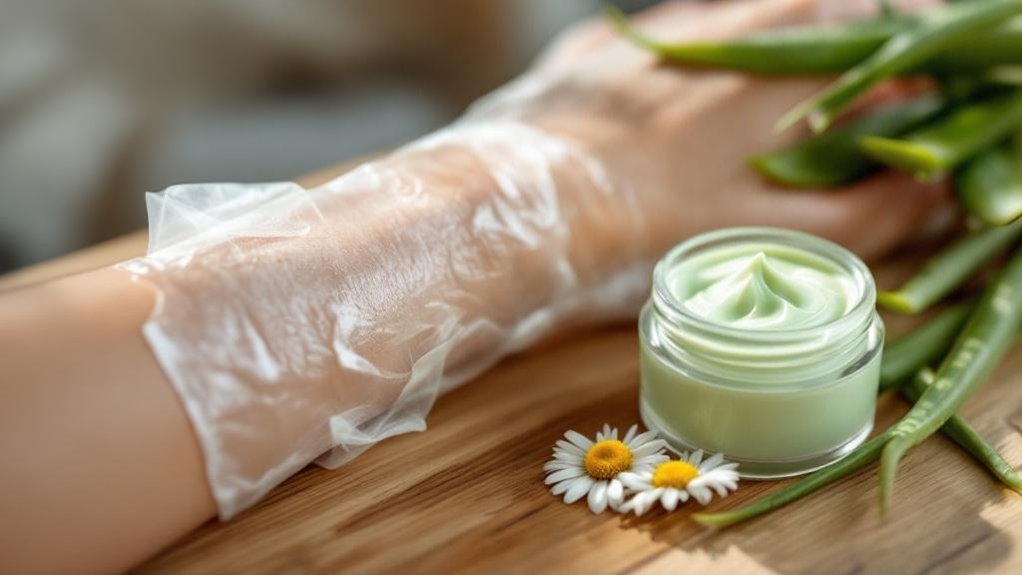
We recognize that selecting appropriate dressings for radiation-induced skin reactions requires careful consideration of hydrogel versus traditional dressing options. Hydrogel dressings support moisture retention and tissue repair through hyaluronic acid-based formulations, aligning with modern wet-wound healing principles that outperform conventional dry healing methods. Silicon-foam dressings with soft silicone adhesive layers provide effective treatment while allowing removal without causing trauma to healthy skin. Additionally, we’ll examine the strategic use of topical steroids and enzymatic treatments to optimize healing outcomes while minimizing secondary trauma to radiation-damaged basal stem cells.
Hydrogel Vs Traditional Dressings
Two distinct approaches dominate post-radiation wound care: hydrogel dressings and traditional dry dressings, each offering specific advantages depending on the severity and location of radiation-induced skin damage.
Hydrogel advantages include superior moisture retention through hydrophilic polymers, creating ideal healing environments for moist desquamation. We’ve observed their self-adhesive properties eliminate additional dressing requirements while maintaining controlled permeability for oxygen exchange. However, traditional dressing drawbacks become apparent in moderate-to-severe acute radiation dermatitis cases, where dry methods can impede re-epithelialization.
Evidence shows hydrogels excel in sensitive areas like breast, head, and neck regions, though they require more frequent changes due to saturation. For our patients experiencing deeper tissue injury, hydrogels’ ability to maintain humidity while preventing bacterial infiltration makes them particularly valuable in specialized post-radiation scenarios. Advanced hydrogel formulations now incorporate antimicrobial properties through nano-antibacterial metal particles to further reduce infection risk.
Topical Steroids and Enzymes
When selecting topical interventions for radiation-induced skin injury, steroid formulations represent our most evidence-based prophylactic approach, demonstrating superior efficacy compared to traditional moisturizing protocols. We’ve found that topical steroid effectiveness peaks when medium-potency options like triamcinolone or mometasone are initiated one week before radiotherapy and continued throughout treatment. Higher-potency formulations, including betamethasone, show particularly strong results in preventing radiation dermatitis onset.
However, we must acknowledge the “breakthrough phenomenon” where certain steroids may paradoxically worsen reactions. While enzyme benefits in wound healing are documented, steroids work by inhibiting inflammatory cytokines and reducing capillary permeability. We recommend avoiding application to open wounds and discontinuing use once dermatitis manifests, as steroids provide minimal benefit after skin damage occurs. Clinical studies demonstrate that healing time remains unaffected even with prolonged topical steroid use throughout the radiation treatment course.
Lifestyle Modifications for Optimal Skin Health
Although radiation therapy effectively targets cancer cells, the treatment inevitably affects surrounding healthy skin tissue, making thorough lifestyle modifications essential for ideal healing and long-term skin health. We recommend implementing extensive stress management techniques, including meditation and adequate rest, as elevated cortisol levels can impair tissue repair mechanisms. Strategic exercise routines promote circulation and reduce treatment-related fatigue while supporting immune function recovery.
Smoking cessation becomes critical since tobacco products greatly compromise healing capacity and cellular regeneration. We advise maintaining a healthy weight through balanced nutrition and avoiding extreme temperature environments that stress compromised skin. Proper hydration support is equally important for overall skin health during the recovery process. These evidence-based modifications work synergistically to optimize your skin’s recovery trajectory. By adopting these targeted lifestyle changes, you’re actively supporting your body’s natural healing processes and establishing protective habits for sustained skin health.
Long-Term Monitoring and Preventive Care Protocols

We establish thorough long-term monitoring protocols that include biannual dermatology screenings to detect secondary malignancies and assess radiation-induced skin changes within treated fields. Our systematic approach involves photographic documentation and clinical grading using NCI CTCAE criteria to track erythema patterns, desquamation severity, and healing progression over 3-6 month intervals post-exposure. Through our professional partnership model, we provide patients with specialized follow-up care that integrates full-body skin examinations with targeted surveillance of irradiated areas, ensuring early detection of complications and effective preventive interventions. Long-term survivors require ongoing vigilance as skin cancer development can occur months to years following radiation exposure, necessitating lifelong dermatological surveillance.
Regular Dermatology Screenings
Post-radiation skin requires lifelong vigilance through systematic dermatological surveillance protocols that extend far beyond the completion of treatment. We recommend biannual dermatology exams for high-risk patients to detect recurrent skin cancer or new lesions effectively. Our thorough approach includes full-body skin examinations covering both irradiated and non-irradiated areas, recognizing that systemic cancer risks aren’t confined to treatment sites.
Photographic documentation enables precise tracking of timing, location, and progression of skin changes over time. For patients with family histories of aggressive malignancies or predisposing syndromes, we advise genetic testing to identify additional risk factors. We coordinate closely with radiation oncologists to align monitoring schedules with radiation protocols and potential toxicity risks, ensuring you receive integrated care that addresses your unique post-treatment needs thoroughly. Vigilant monitoring is particularly crucial given that new skin cancers can develop in previously treated radiation areas as a long-term treatment effect.
Tracking Skin Changes
Since radiation effects can manifest months or years after treatment completion, establishing detailed skin monitoring protocols becomes vital for detecting complications early and preventing long-term sequelae. We recommend implementing systematic skin condition monitoring that tracks location, color changes, size measurements, drainage patterns, and sensory symptoms. Document erythema progression to hyperpigmentation while measuring affected areas for improvement or deterioration. Report unusual discharge, crusting, or infection indicators immediately.
Our radiation side effects monitoring follows established grading systems like NCI CTCAE metrics. We’ll photograph and date affected regions during each assessment, creating extensive progression documentation. Schedule follow-ups aligned with radiation dermatitis phases—prodromal, latent, and manifest stages. Long-term surveillance remains vital since carcinoma risks can emerge decades post-exposure, requiring vigilant dermatological oversight throughout your post-treatment journey.
Professional Partnership Benefits
While systematic self-monitoring provides the foundation for detecting post-radiation skin changes, establishing a formal partnership with dermatological specialists greatly enhances long-term outcomes through evidence-based surveillance protocols. We’ll benefit from customized follow-up schedules that adapt to our specific cancer stage and risk factors. Stage I patients typically receive annual examinations, while higher stages require more frequent monitoring—every 3-6 months initially, shifting to annual visits. These collaborative strategies integrate advanced diagnostic tools like dermatoscopy with targeted imaging when clinically indicated. Our providers coordinate multidisciplinary care, aligning oncology and dermatology teams through standardized protocols. This partnership guarantees patient empowerment through thorough education on UV protection, lifestyle modifications, and early warning signs while providing psychosocial support throughout our survivorship journey. Approximately 5-10% of patients will develop a second invasive melanoma following their initial diagnosis, making professional monitoring essential for early detection of new primary lesions.
Clothing and Fabric Considerations for Sensitive Skin

Strategic clothing choices greatly impact comfort and healing outcomes for patients managing post-radiation skin sensitivity. We recommend prioritizing loose-fitting garments made from natural fibers like cotton or organic materials that optimize fabric breathability while minimizing friction against treated areas. These clothing materials allow proper air circulation, reducing moisture buildup that can exacerbate irritation.
Avoid restrictive elements such as tight collars, ties, or bra straps over treatment sites. Consider alternative undergarments like soft cotton bras or crop tops when necessary. For outdoor protection, we suggest UPF 50+ rated fabrics that block 98% of UV radiation, meeting the Skin Cancer Foundation’s excellence standards. Pre-wash all new garments using fragrance-free, hypoallergenic detergents to eliminate potential chemical irritants before skin contact.
Additionally, patients should be aware that skin reactions may occasionally develop on the opposite side of the body from the original treatment area, making comfortable clothing choices important for overall body coverage.
Temperature Control and Environmental Factors
Beyond fabric selection, we must address how temperature and environmental conditions greatly impact post-radiation skin recovery. Our treated skin develops heightened heat sensitivity due to impaired blood flow and reduced sweat gland function from radiation-induced fibrosis. Temperature sensitivity management requires maintaining indoor environments below 75°F and limiting outdoor exposure during peak heat hours (10 AM–4 PM).
We’ll need thorough humidity control strategies since high humidity traps heat and prolongs healing. Excess moisture reduces sunscreen effectiveness, requiring frequent reapplication. Combined heat and UV exposure accelerates damage beyond UV alone, making environmental monitoring critical.
We recommend cooling gels for localized discomfort and loose, breathable clothing. Our thermotolerance varies individually, so we must personalize our approach while consistently protecting against circumstantial sun exposure through windows. Research indicates that heat sensitivity can differ significantly between individuals, even among those with the same type of skin cancer, reinforcing the importance of developing personalized protection strategies.
Nutritional Support for Skin Recovery and Healing

Since radiation therapy compromises our skin’s cellular repair mechanisms and depletes essential nutrients, we must prioritize targeted nutritional interventions to accelerate healing and restore barrier function. We’ll focus on nutrient timing by consuming antioxidant-rich foods throughout the day—vitamins A, C, D, and E support cellular repair while omega-3 fatty acids from fatty fish reduce inflammation. Antioxidant synergy occurs when we combine lycopene-rich tomatoes with vitamin E sources like nuts, enhancing UV protection. We should consume small, frequent protein-rich meals paired with colorful fruits and vegetables to optimize absorption. Maintaining hydration with 8-10 glasses daily supports skin elasticity. A whole foods diet strengthens the immune system and aids in DNA damage repair, which is particularly important after radiation exposure. By incorporating zinc, selenium, and beta-carotene sources, we’ll strengthen immune function and promote regeneration during this critical recovery phase.
Building a Partnership With Your Dermatology Team
Although radiation therapy requires our individual vigilance in daily skin care, we can’t navigate this complex recovery process alone—establishing a collaborative partnership with our dermatology team guarantees we’re receiving evidence-based interventions tailored to our specific treatment protocols and risk factors. Effective communication strategies include weekly clinical assessments that monitor treatment adherence and detect early skin reactions. We must report changes immediately, including persistent redness, unresolved wounds, or delayed reactions occurring weeks post-treatment. Our dermatologists provide essential guidance on product selection, lifestyle modifications, and long-term monitoring protocols. This partnership extends beyond acute recovery, encompassing screening for secondary malignancies in irradiated areas and managing chronic sensitivities. Individual health conditions such as diabetes can significantly increase our risk for developing more severe skin reactions during recovery. Together, we’re implementing thorough preventive strategies that optimize healing outcomes.
Frequently Asked Questions
Can I Swim in Chlorinated Pools or the Ocean After Radiation Treatment?
We recommend avoiding chlorinated pools during radiation recovery due to chemical irritation risks. Ocean safety requires medical clearance first. Swimming precautions include waiting for complete skin healing and using protective sunscreen measures.
How Long Before I Can Use Makeup on Treated Facial Areas?
We recommend waiting 2-4 weeks before makeup application on treated facial areas. Your skin sensitivity requires our provider’s approval first, ensuring complete healing of any radiodermatitis before introducing cosmetic products safely.
Is It Safe to Get Tattoos or Piercings on Previously Radiated Skin?
We strongly advise against tattoos or piercings on previously radiated skin due to increased infection risks, impaired healing, and potential complications. Tattoo safety and piercing guidelines require careful dermatological evaluation first.
Will My Treated Skin Ever Return to Its Normal Appearance and Texture?
Unfortunately, we can’t expect your treated skin to fully return to its pre-radiation appearance. Skin healing involves permanent changes like fibrosis, discoloration, and texture alterations, though proper scar management helps optimize your recovery outcomes.
Can I Still Receive Other Medical Procedures Like MRIS or CT Scans?
We acknowledge your concerns about imaging safety after treatment. Radiation side effects don’t typically prevent MRIs or CT scans. These procedures use different energy sources and remain safe post-radiation therapy for most patients.
Conclusion
We’ve outlined evidence-based strategies that’ll greatly impact your post-radiation skin health and long-term prognosis. Implementing these protective measures—from photo protection protocols to appropriate wound care management—reduces complications and optimizes healing outcomes. Your dermatological team’s ongoing surveillance remains critical for detecting potential recurrences or secondary malignancies. We recommend strict adherence to these guidelines, as consistent post-treatment care directly correlates with improved skin integrity and reduced cancer recurrence rates in treated areas.
After radiation treatment, we recommend implementing thorough skin protection strategies since treated areas remain permanently vulnerable to damage. Apply broad-spectrum SPF 30+ sunscreen every two hours, avoid peak sun hours (10 AM-4 PM), and wear UPF-rated clothing for consistent coverage. Cleanse with lukewarm water and mild soap, moisturize with approved fragrance-free products, and monitor for infection signs like fever or new sores. Our detailed protocols below outline advanced care techniques for ideal recovery.

While radiation therapy effectively targets cancer cells, it inevitably affects surrounding healthy skin tissue, requiring immediate and specialized post-treatment care. We acknowledge your skin needs gentle attention during this critical radiation healing period. Cleanse treated areas with lukewarm water and mild soap, patting—never rubbing—the skin dry to prevent friction damage. Limit showers to once daily to preserve natural moisture barriers.
Proper skin hydration becomes paramount during recovery. We recommend applying approved moisturizers only after your care team’s clearance, avoiding application within one hour post-radiation. Choose non-greasy formulas like Aquaphor® in thin, even layers. Monitor for infection signs including fever, blisters, or new sores, and report these symptoms immediately to your medical team for prompt intervention.
During recovery, wear soft, loose clothing that won’t irritate your healing skin, keeping the treated area uncovered whenever possible to promote proper air circulation and healing.
Beyond immediate post-treatment care, we must establish thorough sun protection protocols to safeguard radiated skin from harmful ultraviolet exposure. Our UV awareness should center on avoiding peak radiation hours between 10 AM and 4 PM, when exposure risks are highest. We’ll implement broad-spectrum SPF 30+ sunscreen application every two hours, focusing specifically on treated areas that rebuild with diminished natural protection. Tightly woven, UPF-rated clothing provides consistent coverage without reapplication requirements. Wide-brimmed hats protect facial regions, while UV-blocking sunglasses shield periocular skin. Our sun safety strategy includes seeking shade, monitoring daily UV Index readings, and avoiding reflective surfaces that amplify exposure. We can’t rely solely on sunscreen—comprehensive protection requires layering multiple preventive measures for ideal outcomes. Remember that dark colors provide superior UV protection compared to light-colored fabrics, making them particularly valuable for covering previously treated skin areas.

We recognize that effective wound management following radiation therapy requires specialized approaches tailored to compromised tissue healing. Our treatment protocols emphasize hydrogel dressings for ideal moisture balance, rigorous infection prevention measures, and evidence-based topical interventions. These strategies collectively address the unique challenges posed by radiation-induced skin reactions while promoting tissue recovery. Patients should maintain regular moisturizing with fragrance-free products to support optimal skin hydration throughout the healing process.
When radiation therapy damages delicate skin tissue, hydrogel dressings offer a scientifically-proven approach to accelerate healing and minimize complications. We’ve seen these advanced dressings create ideal moist environments that facilitate natural wound closure while enabling autolytic debridement.
The healing mechanisms involve maintaining cellular viability despite radiation-induced toxicity. Aspirin-infused hydrogels scavenge reactive oxygen species and repair DNA damage without compromising cellular growth. These hydrogel applications eliminate harmful adhesive tapes that can further damage fragile skin, providing secure adhesion without chemical bonds.
Our experience shows complete healing in severe radiation dermatitis cases requires approximately 17 dressing changes over 20 days. The semi-occlusive barrier manages moderate exudate while mimicking interstitial fluid’s nutrient profile, supporting thorough dermal repair for our patients. Patients consistently report decreased psychological burden and enhanced comfort throughout the treatment process.
Radiation therapy’s impact on skin barrier function greatly increases infection susceptibility, making thorough prevention strategies paramount for excellent healing outcomes. We must prioritize meticulous infection control through gentle hygiene practices using mild, low-pH cleansers and warm water application. Our approach involves maintaining optimal skin hydration while keeping irradiated areas consistently clean and dry to prevent bacterial proliferation.
We’ll monitor vigilantly for infection indicators including erythema, warmth, or purulent discharge, reporting these signs immediately to our healthcare team. When wounds develop, we’ll follow prescribed protocols for both dry and moist desquamation, applying topical antibiotics as directed. We must avoid disrupting natural healing processes by refraining from manipulating scabs or open areas unnecessarily, allowing our skin’s recovery mechanisms to function effectively. Additionally, we should avoid heating pads or ice packs on treated areas, as these can further compromise already fragile skin integrity.
Although radiation therapy inevitably compromises skin integrity, evidence-based topical treatments can considerably mitigate dermatologic complications and accelerate healing processes. We recommend mometasone furoate 0.1% cream as our first-line corticosteroid, effectively reducing pro-inflammatory mediators during treatment cycles. For patients experiencing moist desquamation, we’ve found hydrogel dressings superior to traditional approaches, promoting ideal skin hydration while limiting bacterial proliferation.
Our topical applications protocol includes silicone-based products like ScarAway® for protective barrier formation. We emphasize washing off emollients before radiation sessions to prevent beam obstruction. For superficial lesions, imiquimod cream provides targeted immunotherapy benefits. We consistently observe better outcomes when patients maintain gentle skincare routines, avoiding alcohol-based vehicles that exacerbate dryness and compromise recovery trajectories. Since 95% of patients receiving radiation therapy develop some degree of skin reactions, establishing a comprehensive topical management plan before treatment initiation proves essential for optimal outcomes.

We recognize that selecting appropriate dressings for radiation-induced skin reactions requires careful consideration of hydrogel versus traditional dressing options. Hydrogel dressings support moisture retention and tissue repair through hyaluronic acid-based formulations, aligning with modern wet-wound healing principles that outperform conventional dry healing methods. Silicon-foam dressings with soft silicone adhesive layers provide effective treatment while allowing removal without causing trauma to healthy skin. Additionally, we’ll examine the strategic use of topical steroids and enzymatic treatments to optimize healing outcomes while minimizing secondary trauma to radiation-damaged basal stem cells.
Two distinct approaches dominate post-radiation wound care: hydrogel dressings and traditional dry dressings, each offering specific advantages depending on the severity and location of radiation-induced skin damage.
Hydrogel advantages include superior moisture retention through hydrophilic polymers, creating ideal healing environments for moist desquamation. We’ve observed their self-adhesive properties eliminate additional dressing requirements while maintaining controlled permeability for oxygen exchange. However, traditional dressing drawbacks become apparent in moderate-to-severe acute radiation dermatitis cases, where dry methods can impede re-epithelialization.
Evidence shows hydrogels excel in sensitive areas like breast, head, and neck regions, though they require more frequent changes due to saturation. For our patients experiencing deeper tissue injury, hydrogels’ ability to maintain humidity while preventing bacterial infiltration makes them particularly valuable in specialized post-radiation scenarios. Advanced hydrogel formulations now incorporate antimicrobial properties through nano-antibacterial metal particles to further reduce infection risk.
When selecting topical interventions for radiation-induced skin injury, steroid formulations represent our most evidence-based prophylactic approach, demonstrating superior efficacy compared to traditional moisturizing protocols. We’ve found that topical steroid effectiveness peaks when medium-potency options like triamcinolone or mometasone are initiated one week before radiotherapy and continued throughout treatment. Higher-potency formulations, including betamethasone, show particularly strong results in preventing radiation dermatitis onset.
However, we must acknowledge the “breakthrough phenomenon” where certain steroids may paradoxically worsen reactions. While enzyme benefits in wound healing are documented, steroids work by inhibiting inflammatory cytokines and reducing capillary permeability. We recommend avoiding application to open wounds and discontinuing use once dermatitis manifests, as steroids provide minimal benefit after skin damage occurs. Clinical studies demonstrate that healing time remains unaffected even with prolonged topical steroid use throughout the radiation treatment course.
Although radiation therapy effectively targets cancer cells, the treatment inevitably affects surrounding healthy skin tissue, making thorough lifestyle modifications essential for ideal healing and long-term skin health. We recommend implementing extensive stress management techniques, including meditation and adequate rest, as elevated cortisol levels can impair tissue repair mechanisms. Strategic exercise routines promote circulation and reduce treatment-related fatigue while supporting immune function recovery.
Smoking cessation becomes critical since tobacco products greatly compromise healing capacity and cellular regeneration. We advise maintaining a healthy weight through balanced nutrition and avoiding extreme temperature environments that stress compromised skin. Proper hydration support is equally important for overall skin health during the recovery process. These evidence-based modifications work synergistically to optimize your skin’s recovery trajectory. By adopting these targeted lifestyle changes, you’re actively supporting your body’s natural healing processes and establishing protective habits for sustained skin health.

We establish thorough long-term monitoring protocols that include biannual dermatology screenings to detect secondary malignancies and assess radiation-induced skin changes within treated fields. Our systematic approach involves photographic documentation and clinical grading using NCI CTCAE criteria to track erythema patterns, desquamation severity, and healing progression over 3-6 month intervals post-exposure. Through our professional partnership model, we provide patients with specialized follow-up care that integrates full-body skin examinations with targeted surveillance of irradiated areas, ensuring early detection of complications and effective preventive interventions. Long-term survivors require ongoing vigilance as skin cancer development can occur months to years following radiation exposure, necessitating lifelong dermatological surveillance.
Post-radiation skin requires lifelong vigilance through systematic dermatological surveillance protocols that extend far beyond the completion of treatment. We recommend biannual dermatology exams for high-risk patients to detect recurrent skin cancer or new lesions effectively. Our thorough approach includes full-body skin examinations covering both irradiated and non-irradiated areas, recognizing that systemic cancer risks aren’t confined to treatment sites.
Photographic documentation enables precise tracking of timing, location, and progression of skin changes over time. For patients with family histories of aggressive malignancies or predisposing syndromes, we advise genetic testing to identify additional risk factors. We coordinate closely with radiation oncologists to align monitoring schedules with radiation protocols and potential toxicity risks, ensuring you receive integrated care that addresses your unique post-treatment needs thoroughly. Vigilant monitoring is particularly crucial given that new skin cancers can develop in previously treated radiation areas as a long-term treatment effect.
Since radiation effects can manifest months or years after treatment completion, establishing detailed skin monitoring protocols becomes vital for detecting complications early and preventing long-term sequelae. We recommend implementing systematic skin condition monitoring that tracks location, color changes, size measurements, drainage patterns, and sensory symptoms. Document erythema progression to hyperpigmentation while measuring affected areas for improvement or deterioration. Report unusual discharge, crusting, or infection indicators immediately.
Our radiation side effects monitoring follows established grading systems like NCI CTCAE metrics. We’ll photograph and date affected regions during each assessment, creating extensive progression documentation. Schedule follow-ups aligned with radiation dermatitis phases—prodromal, latent, and manifest stages. Long-term surveillance remains vital since carcinoma risks can emerge decades post-exposure, requiring vigilant dermatological oversight throughout your post-treatment journey.
While systematic self-monitoring provides the foundation for detecting post-radiation skin changes, establishing a formal partnership with dermatological specialists greatly enhances long-term outcomes through evidence-based surveillance protocols. We’ll benefit from customized follow-up schedules that adapt to our specific cancer stage and risk factors. Stage I patients typically receive annual examinations, while higher stages require more frequent monitoring—every 3-6 months initially, shifting to annual visits. These collaborative strategies integrate advanced diagnostic tools like dermatoscopy with targeted imaging when clinically indicated. Our providers coordinate multidisciplinary care, aligning oncology and dermatology teams through standardized protocols. This partnership guarantees patient empowerment through thorough education on UV protection, lifestyle modifications, and early warning signs while providing psychosocial support throughout our survivorship journey. Approximately 5-10% of patients will develop a second invasive melanoma following their initial diagnosis, making professional monitoring essential for early detection of new primary lesions.

Strategic clothing choices greatly impact comfort and healing outcomes for patients managing post-radiation skin sensitivity. We recommend prioritizing loose-fitting garments made from natural fibers like cotton or organic materials that optimize fabric breathability while minimizing friction against treated areas. These clothing materials allow proper air circulation, reducing moisture buildup that can exacerbate irritation.
Avoid restrictive elements such as tight collars, ties, or bra straps over treatment sites. Consider alternative undergarments like soft cotton bras or crop tops when necessary. For outdoor protection, we suggest UPF 50+ rated fabrics that block 98% of UV radiation, meeting the Skin Cancer Foundation’s excellence standards. Pre-wash all new garments using fragrance-free, hypoallergenic detergents to eliminate potential chemical irritants before skin contact.
Additionally, patients should be aware that skin reactions may occasionally develop on the opposite side of the body from the original treatment area, making comfortable clothing choices important for overall body coverage.
Beyond fabric selection, we must address how temperature and environmental conditions greatly impact post-radiation skin recove

